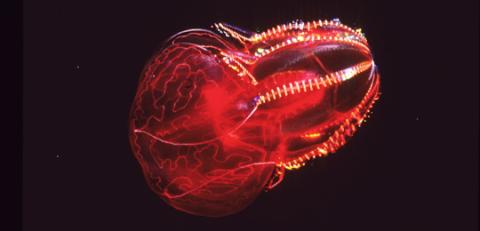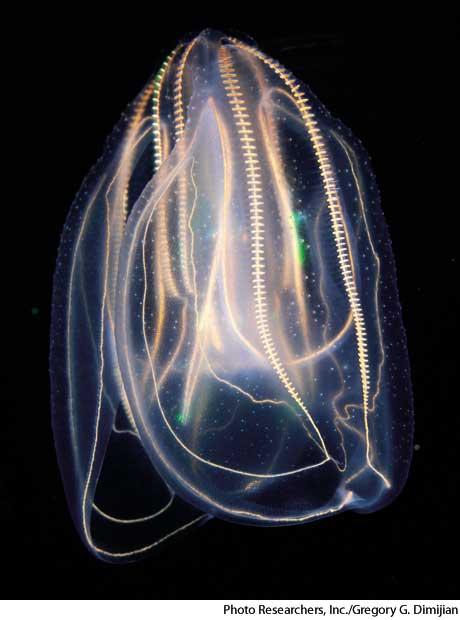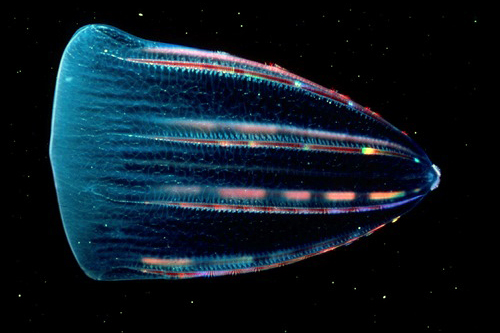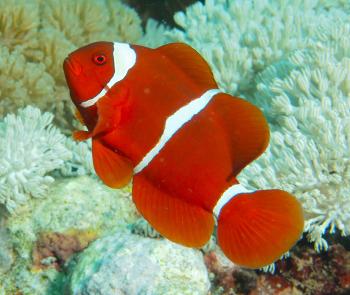
Ctenophore is a small and absolutely beautiful creature. Known as comb jellies, they use eight longitudinal rows of cilia for locomotion. When the cilia beat, light is scattered, producing a rainbow of colors.
The beating combs act like a prism, breaking the light into its color components. Some species of comb jellies (like so many animals in the deep sea) make their own light, called bioluminescence.
All comb jellies are carnivores. Sometimes they use sticky structures on long thin tentacles to capture prey larvae of marine invertebrates. Once they snag prey, the comb jellies contract their tentacles to pass the food to their mouth. Another group of comb jellies, called lobates, have a pair of sticky, expandable lobes for capturing prey/ A third group, species like Beroe, engulf their prey in their mouths. They are voracious predators that even prey on other comb jellies.
Comb jellies are abundant throughout the ocean from pole to pole, from the surface to very deep in the ocean. The majority live in the water column but some are bottom dwellers.
While there are approximately 200 described species however, it’s likely there are many more.
A Uniquely Sticky Situation
Comb jellies have many features that other animals don’t have. Their sticky cells are unlike those of other animals. And comb jellies have muscles and a relatively advanced nervous system that works differently from any other animal. They are alien in many ways. Currently there’s a debate among scientists as to where they fit on the Tree of Life and whether or not they might be the first animals (see our blog about ctenophores). Perhaps they took their own evolutionary pathway.

To learn more:
https://www.earthlife.net/inverts/ctenophora.html
https://www.montereybayaquarium.org/animal-guide/invertebrates/comb-jelly
















